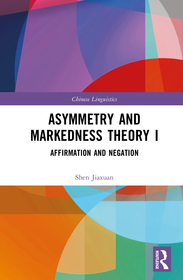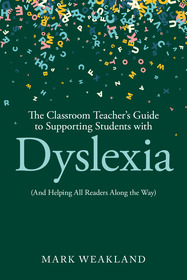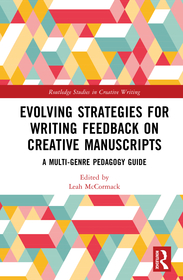
Narrative Know-How
A Fresh Approach to Support Comprehension and Craft in the K–6 Classroom
Sorozatcím: Corwin Literacy;
-
8% KEDVEZMÉNY?
- A kedvezmény csak az 'Értesítés a kedvenc témákról' hírlevelünk címzettjeinek rendeléseire érvényes.
- Kiadói listaár GBP 29.99
-
14 327 Ft (13 645 Ft + 5% áfa)
Az ár azért becsült, mert a rendelés pillanatában nem lehet pontosan tudni, hogy a beérkezéskor milyen lesz a forint árfolyama az adott termék eredeti devizájához képest. Ha a forint romlana, kissé többet, ha javulna, kissé kevesebbet kell majd fizetnie.
- Kedvezmény(ek) 8% (cc. 1 146 Ft off)
- Kedvezményes ár 13 181 Ft (12 553 Ft + 5% áfa)
Iratkozzon fel most és részesüljön kedvezőbb árainkból!
Feliratkozom
14 327 Ft

Beszerezhetőség
Még nem jelent meg, de rendelhető. A megjelenéstől számított néhány héten belül megérkezik.
Why don't you give exact delivery time?
A beszerzés időigényét az eddigi tapasztalatokra alapozva adjuk meg. Azért becsült, mert a terméket külföldről hozzuk be, így a kiadó kiszolgálásának pillanatnyi gyorsaságától is függ. A megadottnál gyorsabb és lassabb szállítás is elképzelhető, de mindent megteszünk, hogy Ön a lehető leghamarabb jusson hozzá a termékhez.
A termék adatai:
- Kiadás sorszáma 1
- Kiadó Corwin
- Megjelenés dátuma 2025. december 14.
- ISBN 9781071941683
- Kötéstípus Puhakötés
- Terjedelem224 oldal
- Méret 254x177 mm
- Nyelv angol 700
Kategóriák
Rövid leírás:
Teach your students to grasp the structure of narratives with this simple, yet powerful approach!
Teaching text structure has never been easier or more engaging. Narrative Know-How: A Fresh Approach to Support Comprehension and Craft in the K–6 Classroom equips educators with innovative tools to help students understand the structure of stories, improving both their reading comprehension and their ability to craft compelling narratives. Through his unique Mood Structures strategy, Trevor Bryan offers a simple yet powerful way for students to connect with fiction and nonfiction texts alike. Whether you're aiming to boost engagement, make complex ideas more accessible, or bring joy back to your literacy lessons, this book delivers.
Designed to help young readers and writers thrive, this resource focuses on actionable strategies and practical lessons tested in real classrooms. Teachers will gain the tools they need to develop students’ narrative comprehension, improve written expression, and foster critical thinking skills.
Offering a fresh approach to comprehension and narrative writing, this research-backed book
- Provides a proven instructional sequence that connects reading and writing to enable students to seamlessly build comprehension and composition skills
- Addresses key narrative elements such as mood, symbolism, and themes in both reading and writing through 20 classroom-tested lessons
- Helps students understand narrative principles with more than 20 extensive mentor texts examples and accompanying deconstructions
- Includes original illustrations from the award-winning author-illustrator, Jarrett Lerner, visual tools, graphic organizers and guided response sheets that enhance engagement and make the approach easy to access for every learner
Trevor Bryan’s groundbreaking instructional strategies make literacy instruction purposeful, practical, and fun. With Narrative Know-How, educators will inspire their students to think critically, write skillfully, and read with deeper insight.
TöbbHosszú leírás:
Teach your students to grasp the structure of narratives with this simple, yet powerful approach!
Teaching text structure has never been easier or more engaging. Narrative Know-How: A Fresh Approach to Support Comprehension and Craft in the K–6 Classroom equips educators with innovative tools to help students understand the structure of stories, improving both their reading comprehension and their ability to craft compelling narratives. Through his unique Mood Structures strategy, Trevor Bryan offers a simple yet powerful way for students to connect with fiction and nonfiction texts alike. Whether you're aiming to boost engagement, make complex ideas more accessible, or bring joy back to your literacy lessons, this book delivers.
Designed to help young readers and writers thrive, this resource focuses on actionable strategies and practical lessons tested in real classrooms. Teachers will gain the tools they need to develop students’ narrative comprehension, improve written expression, and foster critical thinking skills.
Offering a fresh approach to comprehension and narrative writing, this research-backed book
- Provides a proven instructional sequence that connects reading and writing to enable students to seamlessly build comprehension and composition skills
- Addresses key narrative elements such as mood, symbolism, and themes in both reading and writing through 20 classroom-tested lessons
- Helps students understand narrative principles with more than 20 extensive mentor texts examples and accompanying deconstructions
- Includes original illustrations from the award-winning author-illustrator, Jarrett Lerner, visual tools, graphic organizers and guided response sheets that enhance engagement and make the approach easy to access for every learner
Trevor Bryan’s groundbreaking instructional strategies make literacy instruction purposeful, practical, and fun. With Narrative Know-How, educators will inspire their students to think critically, write skillfully, and read with deeper insight.
TöbbTartalomjegyzék:
Acknowledgments
About the Author
PART 1: Small Steps into Story
Introduction
Foundations of This Approach
Chapter One: Teach Text Structure with Mood Structure
Traditional Text Structure Teaching
A Bottom-Up Approach
The Solution: The Mood Structures
Mood Structure: A Closer Look
Chapter Two: Determining Mood as a Critical Reading Skill
How Moods Show Up in Stories
The Access Lenses in Action
Chapter Three: Using Mood and Mood Structure to Bolster Comprehension During Reading
What Do We Want Students to Pay Attention To?
Using the Three Key Questions to Set a Purpose for Reading
Chapter Four: Using the Mood Structures for Summarizing and Identifying Themes After Reading
Using Moods and Mood Structures to Lean Into Symbolism
Using the Terms Helpers and Harmers to Simplify Symbolism
Chapter Five: An Instructional Sequence that Connects Reading and Writing
Our Instructional Sequence
Clearly Connecting the Reading and Writing Connection
Research on Integrating Reading and Writing Instruction
PART 2: Lessons
Introduction
Lesson Layout
The Reading Lessons
The Very First Lesson: Checking for the Understanding of Negative and Positive Moods
Reading Lesson 1: Noticing Mood Structures When Reading
Reading Lesson 2: Look for the Helpers
Reading Lesson 3: Noticing Moods When They Are Directly Stated
Reading Lesson 4: Using the Access Lenses to Infer Moods When Moods Are Shown
Reading Lesson 5: Introducing the Concept of Harmers
Reading Lesson 6: Three Key Questions That Readers Should Always Be Asking
Reading Lesson 7: Making Predictions
Reading Lesson 8: Making Text-to-Text Connections Based on Mood or Mood Structure
Reading Lesson 9: Harmers Turned Helpers
Reading Lesson 10: Generating Themes Through Moods and the Reasons for Those Moods
Reading Lesson 11: Helpers and Harmers as Symbols
Reading Lesson 12: The Three Ingredients of Story
Reading Lesson 13: Using the Three Ingredients of Story to Summarize
Reading Lesson 14: Using the Three Ingredients of Story and the Mood Structures to Summarize
The Writing Lessons
Writing Lesson 1: Generating Workable Story Ideas
Writing Lesson 2: A Reading and Writing Lesson to Help Students Generate Story Ideas
Writing Lesson 3: Showing the Mood With the Access Lenses
Writing Lesson 4: Including Inner Thoughts
Writing Lesson 5: Using Dialogue to Help Present Moods, Reasons for the Moods, and Events
Four Versions of a Story
Teaching the Opening of “The Catch”: Version 1–4
PART 3: Starter Texts and Full-Text Deconstructions
Introduction
Starter Texts
Full-Text Deconstructions
Finding Your Own Resources
THE STARTER TEXTS
“Playing Outside”
“Reading Time”
“Cooper” (Five-Panel Comic)
“Cooper” (Six-Panel Comic)
The Kissing Hand
Mercy Watson to the Rescue
“One Sad Simba”
Henry’s Freedom Box
Thank You, Mr. Falker
Mr. Wayne’s Masterpiece
Stone Angel
Each Kindness
Frindle
“The First Day”
FULL-TEXT DECONSTRUCTIONS
The Rain Came Down
The Dot
Ish
“Taco Head”
The Great Penguin Rescue
“A Howlin’ Success”
Blank Deconstruction Form
References
Index








